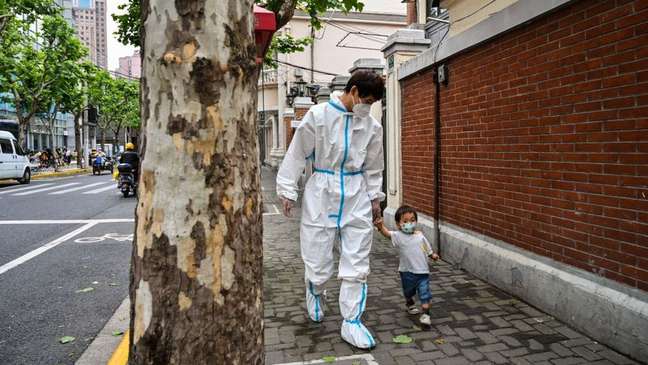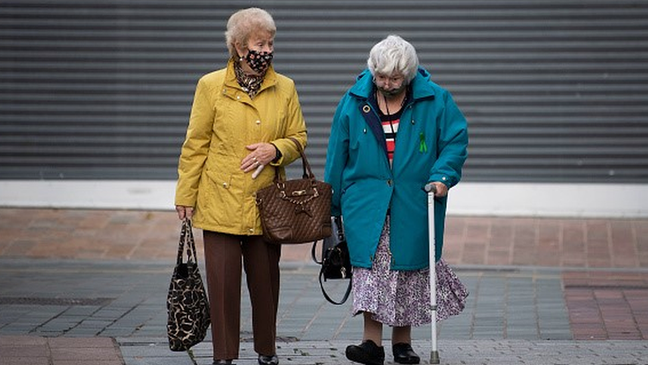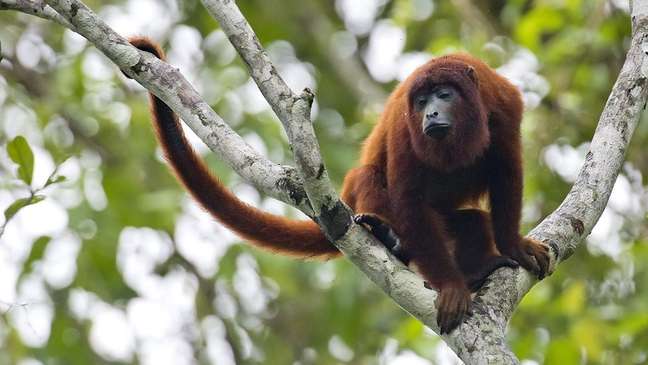The spread of the disease in several countries has raised the alert of authorities and experts, who work not only to prevent the transmission of the virus, but also to avoid the distortions that have occurred in other health crises and that have led to stigma, xenophobia. and also threats to nature. .

2,103 cases of monkeypox were confirmed in 42 different countries between May and June.
The disease, previously confined to certain regions of Africa, is spreading unexpectedly in Europe, the Americas, the Middle East and Oceania, according to the latest information from the World Health Organization (WHO).
The outbreak, which is still under investigation by authorities, draws attention for bringing together three attributes that pose a risk of deepening stigma and prejudice – or, from another perspective, an “opportunity” to correct and avoid mistakes made in other health crises.
In addition to the obvious effects on the health system, epidemics and pandemics also cause social transformations and communication about them can lead to distorted notions that last for decades. This also jeopardizes the control of cases, hospitalizations and deaths associated with this condition.
HIV and coronavirus are examples of this phenomenon: the generic definition of “risk groups” has made many people relax and not believe in the possibility of an infection. This, in turn, created new transmission chains in the community and allowed pathogens to spread silently without attracting attention.
Next, experts heard by BBC News Brazil list three mistakes made in past epidemics that can be avoided now, the monkeypox epidemic and other future crises.
Xenophobia
For decades, the classification system for new viruses, variants, or even diseases has taken into account where they were first detected or reported.
Zika, for example, is a rainforest in Uganda where the pathogen of the same name was first found in 1947.
In 1918, the disease that caused one of the deadliest pandemics in history became known as the “Spanish flu,” although the virus most likely originated in US military camps (it was previously only reported in newspapers in Spain).
“And to this day we call the new strains of the influenza virus, the one that causes the flu, according to the city in which they were detected,” adds infectious disease expert Raquel Stucchi, professor at Campinas State University ( Unicamp).
Let’s take a practical example: the versions of the pathogen that have circulated the most in Brazil in recent months have been H1N1 Victoria and H3N2 Darwin.
Victoria and Darwin are cities in southern and northern Australia respectively.
Such a system brings a lot of problems. The first is that the place where a virus, variant or disease has been described in the first person is not always the birthplace of that pathogen or condition.
The discovery could only mean that that city (or country) has an excellent surveillance system, which has detected cases imported from another region of the planet.
And, even if the place was the “birthplace” of the infectious agent or the disease, it doesn’t seem to make much sense to use the name of a neighborhood, forest, city or town to describe that new situation. .
This custom only creates an unnecessary incentive for xenophobia: the name adopted can lead to misinterpretations, as if the problem lay in the people living in the original epicenter of the epidemic, epidemic or pandemic.
WHO has realized this risk and has already changed things since Covid-19 appeared.
The latest coronavirus to come to attention before the current pandemic was Mers-CoV in 2012, first detected in Saudi Arabia. The name Mers stands for Middle Eastern respiratory syndrome.
In the current health crisis, this trend has been corrected. The name of the causative virus is Sars-CoV-2 (Sars stands for Severe Acute Respiratory Syndrome) and the disease became known as covid-19 (something like “coronavirus disease 2019” in the literal translation of the acronym in English).

More neutral terms have also been adopted with coronavirus variants. When they first emerged, they were called “United Kingdom”, “South African” or “Manausian” lineages.
But this was quickly corrected and the concern variants were anchored to the Greek letters, such as alpha, beta, gamma, delta, and omicron.
And WHO seems to be showing the same concern now about monkeypox. The body took a stand after more than 30 scientists signed a letter highlighting “the urgency of looking for names that are not discriminatory or stigmatizing.”
Stucchi, who is also a member of the Brazilian Society of Infectious Diseases, considers this discussion “prudent”.
“This is something that needs to be thought through very carefully so as not to encourage constraint or prejudice,” he evaluates.
“But it is curious that this worldwide concern over the name appears only now that the disease has left Africa and has begun to reach the Americas and Europe,” he notes.
Stigmatization of social groups
The emergence of a new infectious disease always asks the same question: who is most likely to be affected?
On the one hand, the definition of so-called “risk groups” is important from a public health point of view.
“In no disease is the risk of disease or death homogeneous in the population,” explains epidemiologist Alexandre Grangeiro, of the Department of Preventive Medicine of the Faculty of Medicine of the University of São Paulo (USP).
“So by determining who is most likely to be affected, you target public policies appropriately and you don’t increase inequalities.”
“This not only ensures patient care at the right time, but also helps break the chain of transmission of the virus,” he adds.
The problem is when this definition of risk groups is hasty, messy, or takes into account only the first cases.
And that’s exactly what has happened (and still happens) in some of the epidemics of the past few decades.
In the 1980s, when AIDS became a global problem, the first information released was that only men who had sex with men were at risk – at the time, the term “gay plague” was used pejoratively to speak of HIV infection.
More recently, in the current covid-19 pandemic, some content released in the press and on social networks claimed that only the elderly and people with compromised immune systems have developed complications.

In both cases, these early messages confirmed the idea that other people who did not fit into these “risk groups” were free from any threats.
And the result we have seen in practice: the viruses have spread and have severely affected people who, presumably, according to this erroneous information, would not need to worry about AIDS or covid, such as heterosexual women and young adults, for example. example.
Grangeiro believes that the problem begins when the definitions of risk are very generic and based only on the first cases detected, which are usually more serious and end up being referred to specialized services.
“In principle, some information on risk groups is not wrong, but it can lead to public health strategies that, in practice, also have a negative impact”, points out the expert.
“In the case of AIDS, for example, it was defined that the risk was higher among men who have sex with men. Is that wrong? No, the risk was in fact 10 to 11 times higher in this audience,” he calculates.
“The mistake lies in taking only this single observation into health policy. Because those who were most at risk were individuals with extensive and unprotected sex networks, including heterosexuals,” he says.
Now with monkeypox, this same pattern is likely to repeat itself. According to a report released by the British Health Safety Agency, the vast majority of cases have been identified in individuals who consider themselves gay, bisexual or men who have sex with men.
The study followed 152 patients with confirmed infection. Of these, 151 claimed to be part of one of the three characteristics listed above.
But, as past experience teaches us, it is dangerous to close such generic risk groups too early and say that the rest of the population can relax.
“Each new disease brings anxiety, insecurity and fear. And these initial concepts end up being very strong and are marked”, underlines Grangeiro.
“In HIV itself, even with decades of work, we still see a lot of prejudice against the homosexual and trans population.”
“We cannot repeat this mistake again”, concludes the epidemiologist.
threats to nature
To close the list, we cannot ignore the fact that the choice of name and the information disclosed about the disease endanger some animals.
Brazil had a classic example of this between 2016 and 2017, when some states experienced an outbreak of yellow fever.
In this context, the big problem was that the virus, transmitted by some wild mosquitoes, affects humans and monkeys, such as howler monkeys.
“And we have had deplorable records of episodes of assault and violent death of some primates during this period,” recalls veterinary doctor Paula Rodrigues de Almeida, a professor at Feevale University, Rio Grande do Sul.

This is because some people interpreted monkeys as guilty or even transmitted the virus, when in fact they were victims like humans.
“They are even more sensitive than us,” corrects Almeida.
“And because these howler monkeys die faster, they act as sentinels and warn us of the possible increase in cases in a given region,” he adds.
In the case of monkeypox – as the name suggests, by the way – this risk is repeated to animals due to a misinterpretation of the facts.
“And, once again, the monkeys are victims of this story. They are infected, but the reservoirs of these viruses in nature are some rodents,” explains Almeida.
This gives even more force to a possible change in the name of the virus or disease.
“We cannot reinforce or encourage stigma, both against humans and animals,” concludes the expert.
– This text was published at https://www.bbc.com/portuguese/geral-61930716
Source: Terra
Benjamin Smith is a fashion journalist and author at Gossipify, known for his coverage of the latest fashion trends and industry insights. He writes about clothing, shoes, accessories, and runway shows, providing in-depth analysis and unique perspectives. He’s respected for his ability to spot emerging designers and trends, and for providing practical fashion advice to readers.








